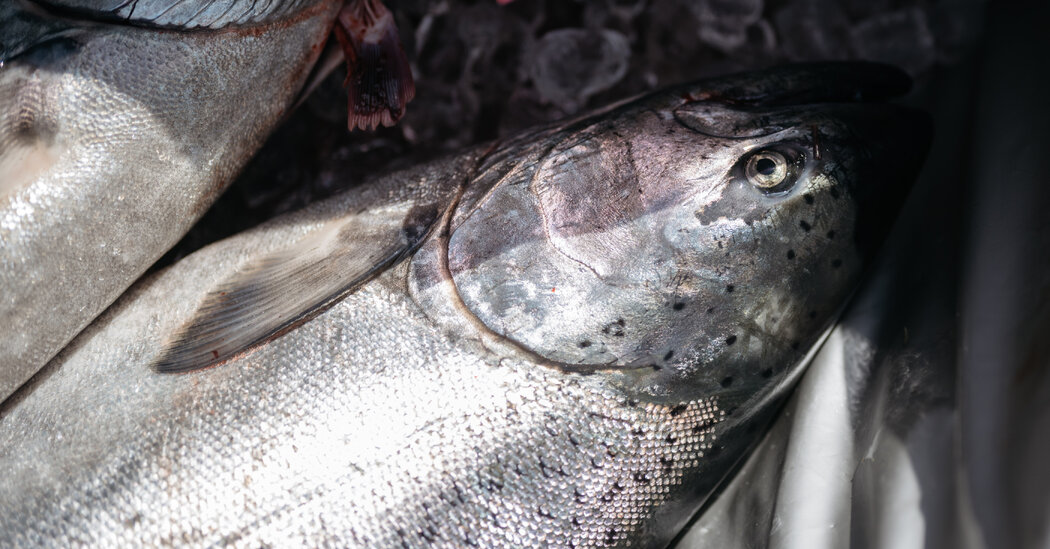In Washington State, April is when millions of young Chinook salmon are released from hatcheries, where they started as tiny, pink globes, to swim downstream and rebuild the salmon population. They are part of an ecosystem that affects tribal, commercial, and recreational fishing and are a main source of food for endangered killer whales.
But this year, almost a dozen hatcheries in the Puget Sound region are in limbo because a single employee from the National Oceanic and Atmospheric Administration was terminated in February, a casualty of cuts made by billionaire Elon Musk’s advisory group known as the Department of Government Efficiency.
That employee was Krista Finlay and her job at NOAA was to ensure hatcheries complied with the Endangered Species Act before the fish were released into Puget Sound. She was among tens of thousands of federal employees with probationary status who lost their jobs in February. Ms. Finlay, who had worked at NOAA since March 2024 after more than two years as an intern and then fellow, said she feared for the salmon run.
“If I don’t release millions and millions of salmon, there’s less this year and years going forward,” Ms. Finlay said. “If we don’t have salmon returning in 2027 and 2028, we don’t have offspring to release the following year, so it will take many, many years to repair this, if it’s even possible.”
Since January, the Trump administration has cut more than 56,000 employees across dozens of federal agencies — ranging from workers who fight wildfires on federal land to those who research vaccines to prevent the next pandemic. Some employees have been reinstated while many others are still on administrative leave and unable to do their work.
In response to a request for comment, Rachel Hager, a public affairs officer with NOAA Fisheries, wrote in an email that “Per long-standing practice, we are not discussing internal personnel and management matters.”
In the Pacific Northwest, salmon are deeply interwoven into the economic and cultural fabric. Over the last century, there’s been a well-documented decline in the number of salmon returning to Washington’s rivers, a shrinkage driven by habit degradation, climate change and over harvesting.
Under NOAA, hatcheries have become vital to keeping salmon in some rivers, according to Daniel Schindler, an ecology professor at the University of Washington who studies fisheries.
“It’s safe to say that one of the critical roles that NOAA plays is to ensure that hatcheries are operated in a way to minimize impact on wild fish, particularly endangered stocks,” Dr. Schindler said. “Reducing those hatchery releases impacts everything from providing food for marine mammals to supporting tribal and sport fisheries.”
Ms. Finlay and most other reinstated NOAA employees have not regained access to their work accounts. Many also haven’t received official notices of termination that would allow them to more easily apply for unemployment or transfer insurance benefits for their families.
Mark Baltzell was also terminated in February from his government position as a fishery management specialist following decades doing similar work with Washington State’s Department of Fish and Wildlife. He said there are only a few people in NOAA who understand how the complicated management agencies for fisheries fit together.
“The more you diminish that capacity and the people involved in that work, it’s like the domino effect,” Mr. Baltzell said. “You start having a ripple effect on other parts of management or recovery of these populations.”
About 12 million Chinook salmon that are usually released each year could be affected, said Adrian Spidle a fishery geneticist with the Northwest Indian Fisheries Commission, an agency representing 20 tribes.
The Northwest Indian Fisheries Commission has helped forecast the return of salmon populations since the 1970s, and used those models to estimate how to sustain a healthy fish population and harvest. The responsibility for managing the fisheries and the salmon harvest is shared by the tribes and Washington State, and overseen by NOAA.
“NOAA either has to replace that person or give that person’s work to somebody,” Mr. Spidle said. “The thing about NOAA cutting people is that they can cut people but it doesn’t cut their obligations.”
Since the federal workers were terminated, communication with NOAA has been challenging for Mr. Spidle and others who work on the salmon program.
“Right now it goes back and forth whether we can even talk to NOAA people,” he said.
“It’s more complicated than the loss of one person,” he added, “it impacts all of us.”
David Troutt, the natural resources director for the Nisqually Indian Tribe said the loss of NOAA staff members who have dedicated careers to this work are hard to replace. “Even if the funding were restored, or NOAA was able to hire additional staff, they’re likely going to hire folks with less experience and understanding of the issues,” Mr. Troutt said. “I don’t know what the long term consequences of this might be.”
